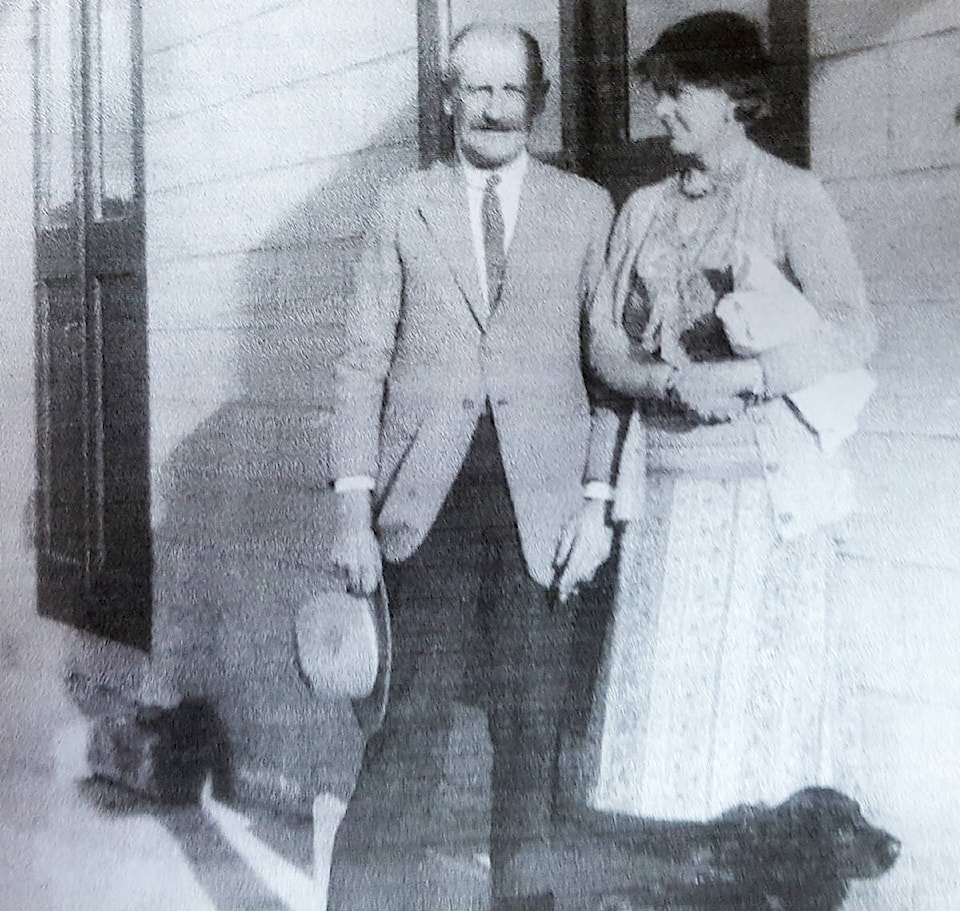Barry SALE
Special to the Tribune
Last year, with the construction of a new pedestrian bridge, the R.C. Cotton site was very much in the news.
That site is the former industrial flats area at the west end of Williams Lake, located between the Scout Island marshes and Highway 20.
So, who was R.C. Cotton and why is his name associated with this site? The answers to these questions provide another glimpse into our local history.
Robert Cecil Cotton was a young man, 19 years of age, when he arrived by stage coach at Soda Creek in 1897.
He had been born into a wealthy family of aristocrats in Hampton Court, England (his older brother held the title of Lord Combermere).
From Soda Creek, Cotton made his way to the Riske Creek Ranch, which had been owned by Mortimer “Old” Drummond since 1880, when he purchased it from the original owners, Sam and Ed Withrow.
On the ranch, Cotton became a ‘mud pup’ for Old Drummond, training in the ways of cattle ranching with a view eventually to own and/or operate a ranch of his own.
Since B.C. was still a part of the British Empire, it had become quite fashionable for well to do families in Great Britain to encourage their younger sons to look at ranching as a career and as a viable source of income. Many families would pressure these young men to emigrate and to make a life for themselves in the colonies.
These upper class families saw this as their duty to do their part to expand and continue the influence of the British Empire.
Unlike ‘remittance men,’ who were paid by their families to go far away from home and stay away, for the ‘mud pups,’ the family sent a monthly stipend directly to the host rancher, who trained the young men in the business.
R.C. Cotton stayed at the Riske Creek Ranch for two years at a cost to his family of $25 per month, and during this time, ranching took hold of him.
He returned home to England in the fall of 1899, but he missed the Chilcotin and the ranching life.
Eventually, he returned to Riske Creek, and in 1907 he purchased the ranch from Old Drummond for $40,000, all his personal savings at the time.
Being a little short of working capital, he borrowed another $25,000 from his aunt, and he never looked back.
Over the ensuing years, Cotton purchased more land, and built up his cattle herd to over 1,500 head. He kept the ‘W’ brand that the Withrow brothers had originally registered, and which Old Drummond had continued to use.
Water for irrigation was brought from Riske Creek and stored behind what is still known as the Cotton Dam.
He built a large, comfortable two-storey log house which became the centre of the ranch operations.
In the early 1920s he hired a Chinese man, Chow Gatt, to be his housekeeper and cook.
Cotton named his vast holdings ‘The Ranche,’ and over the years, people began referring to him as the Chilcotin Cattle King.
Despite the name he gave it, his ranch naturally became widely known as the Cotton Ranch.
R.C. met and married a woman who had originally come from Tasmania to be the governess for the Yolland family of 150 Mile House. Her name was Maude Waller.
Together, they had one daughter, Sylvia.
READ MORE: Quesnel Forks, a true relic of the gold rush
Maud was a very talented woman who sang, played the piano, was an excellent gardener, and even had her own herd of purebred shorthorns.
In the 1930s, she purchased her own car, a Packard, but her husband outright refused to ride in it when she was driving.
For 38 years, R.C. Cotton continued to develop and improve his holdings.
He loved the wide open range and the vast expanses of grasslands.
As a hobby, he raised pheasants, then turned them loose.
Friends would join him for weekend pheasant hunts. Some wild pheasants, descendants of those original birds, can still be seen in the area today.
In 1945, Cotton sold his land holdings in the Chilcotin to the Chilko Ranch. He and Maude, along with their Chinese manservant, moved into Williams Lake, where he purchased a tract of land at the west end of Williams Lake.
There, he kept up a small ranching operation with about 75 head of cattle, which he ranged on the land where the Tolko mill, log and lumber yards are located today.
The grassy flat area near his modest home became known to the locals at the R.C. Cotton land.
Maude passed away in the Williams Lake hospital in 1954. Chow Gatt was R.C.’s caregiver for the next two years until Cotton died peacefully at home in 1956.
As for the Cotton Ranch, it was sold and resold, and has since come full circle, now being part of the Riske Creek Ranch holdings once again.
The Chilcotin area was once home to a number of large, prosperous ranches, with many colourful characters being a part of their story.
R.C. Cotton was one of these men, and his name still lives on in the Williams Lake valley.
Much of the information for this column was found in the Witte sisters’ book about the pioneers of the Chilcotin.
editor@wltribune.com
Like us on Facebook and follow us on Twitter
